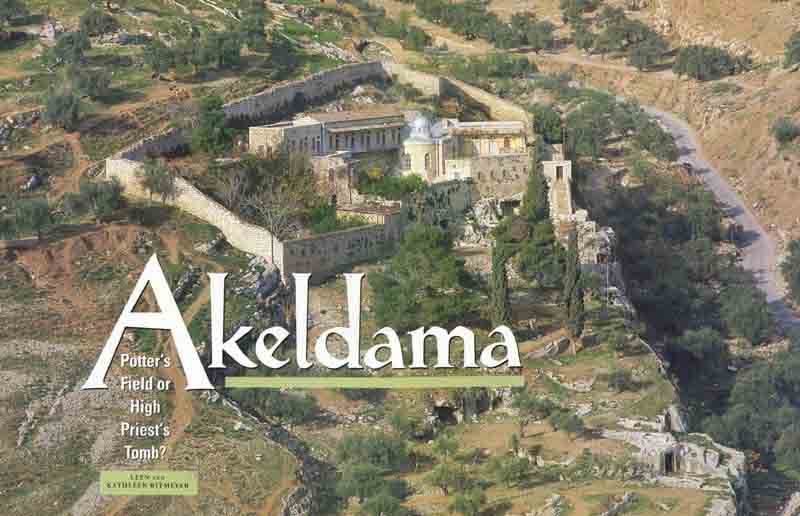Image Details

Garo Nalbandian
The drawing highlights several of the significant structures shown in the photo. The arched structure at top is the remains of a 12th-century Crusader charnel house, where bodies were said to decompose in a day. Within the chapel of the silver-domed monastery is the burial cave known as the “Refuge of the Apostles,” where, according to tradition, the disciples fled after the arrest of Jesus at Gethsemane. The steps to the left of the chapel descend to a second burial cave, whose facade is in a style known as distyle in antis (“two-pillared porch”). The opening of the third—and most elaborate—tomb, perhaps the burial place of the high priest Annas, can be seen near the bottom of the photo. The tomb pictured on the cover appears at lower right. Lower on the ridge and to the left, but with no remains visible in this photo (but marked with an X on the drawing), are three recently discovered burial caves, discussed in detail in “Akeldama: Resting Place of the Rich and Famous.”
